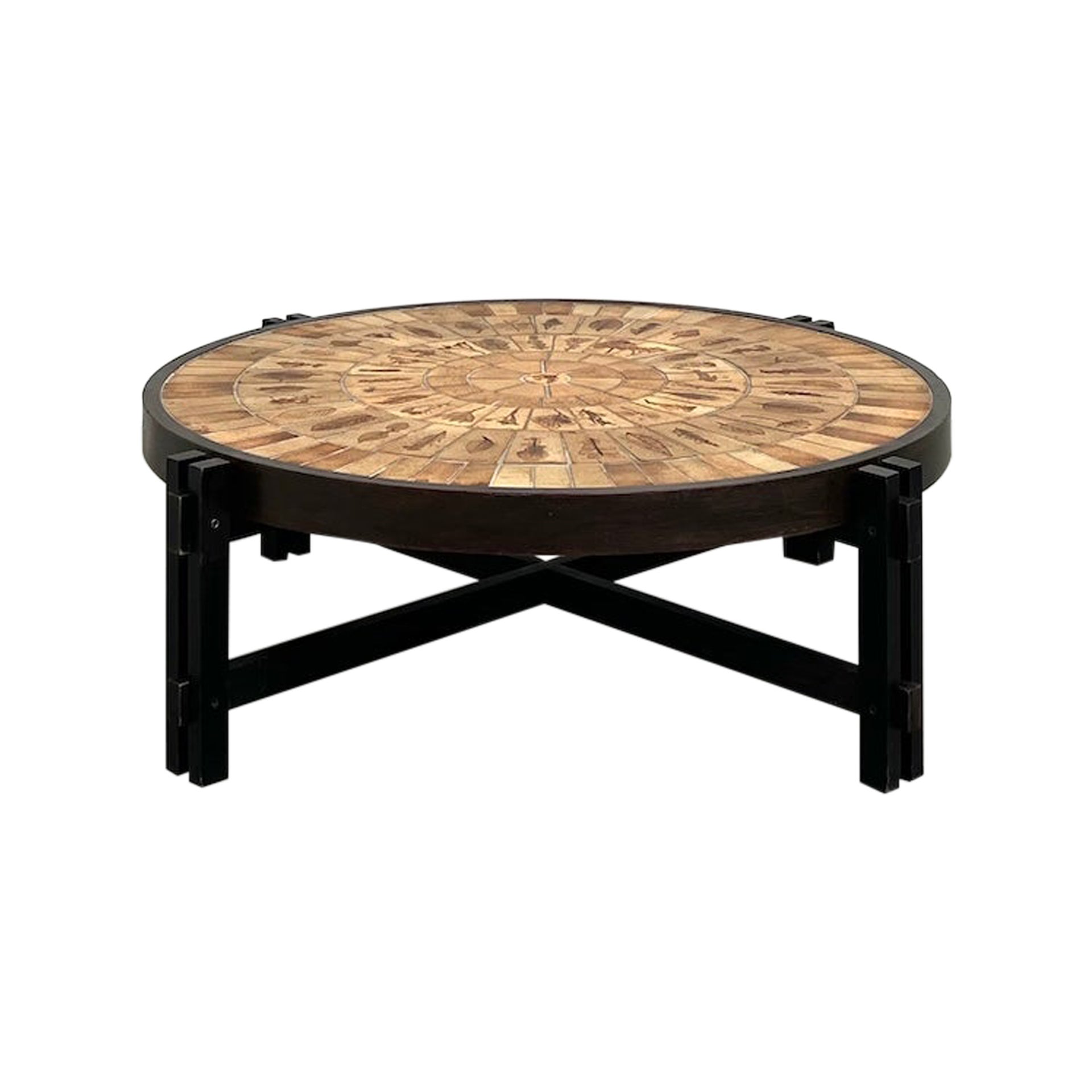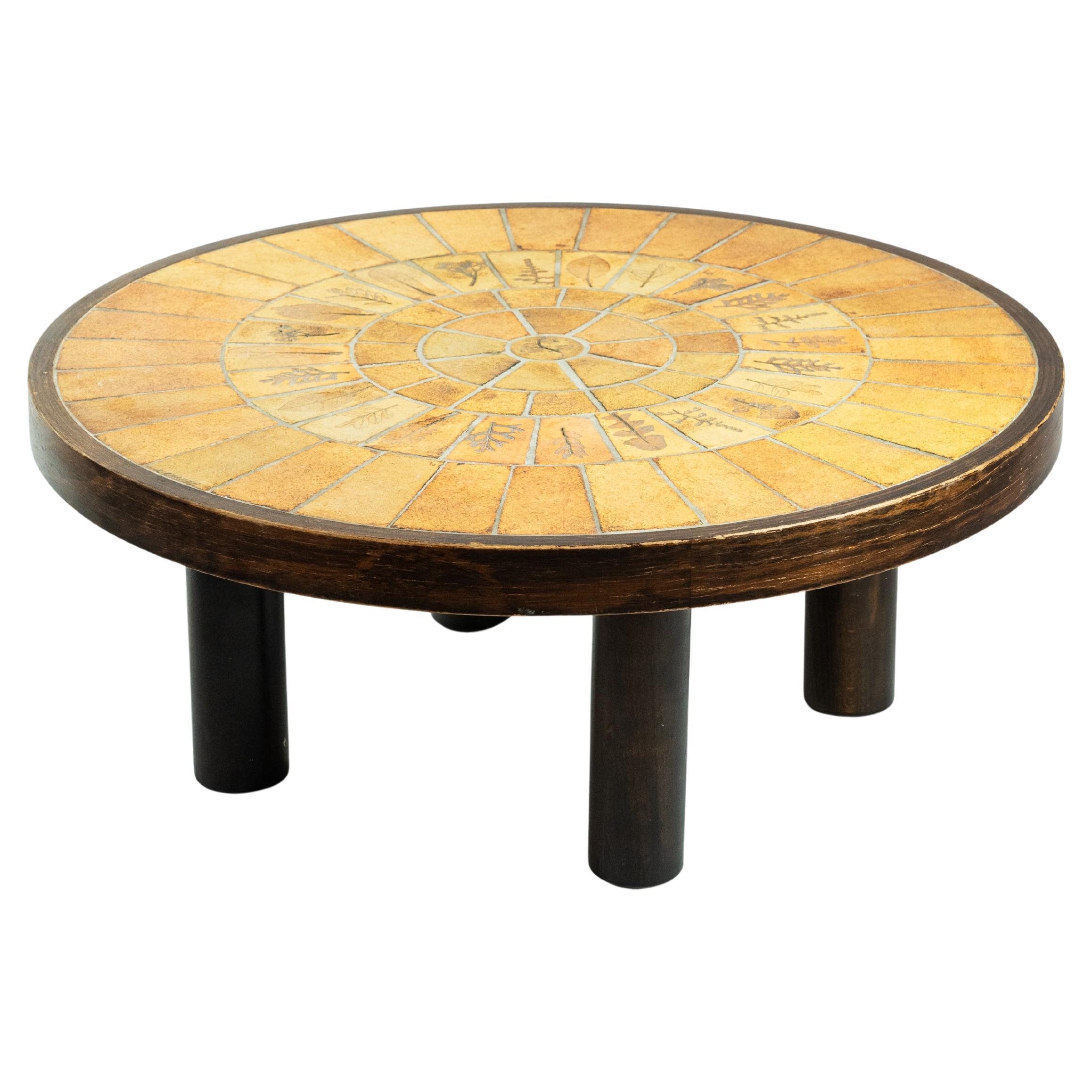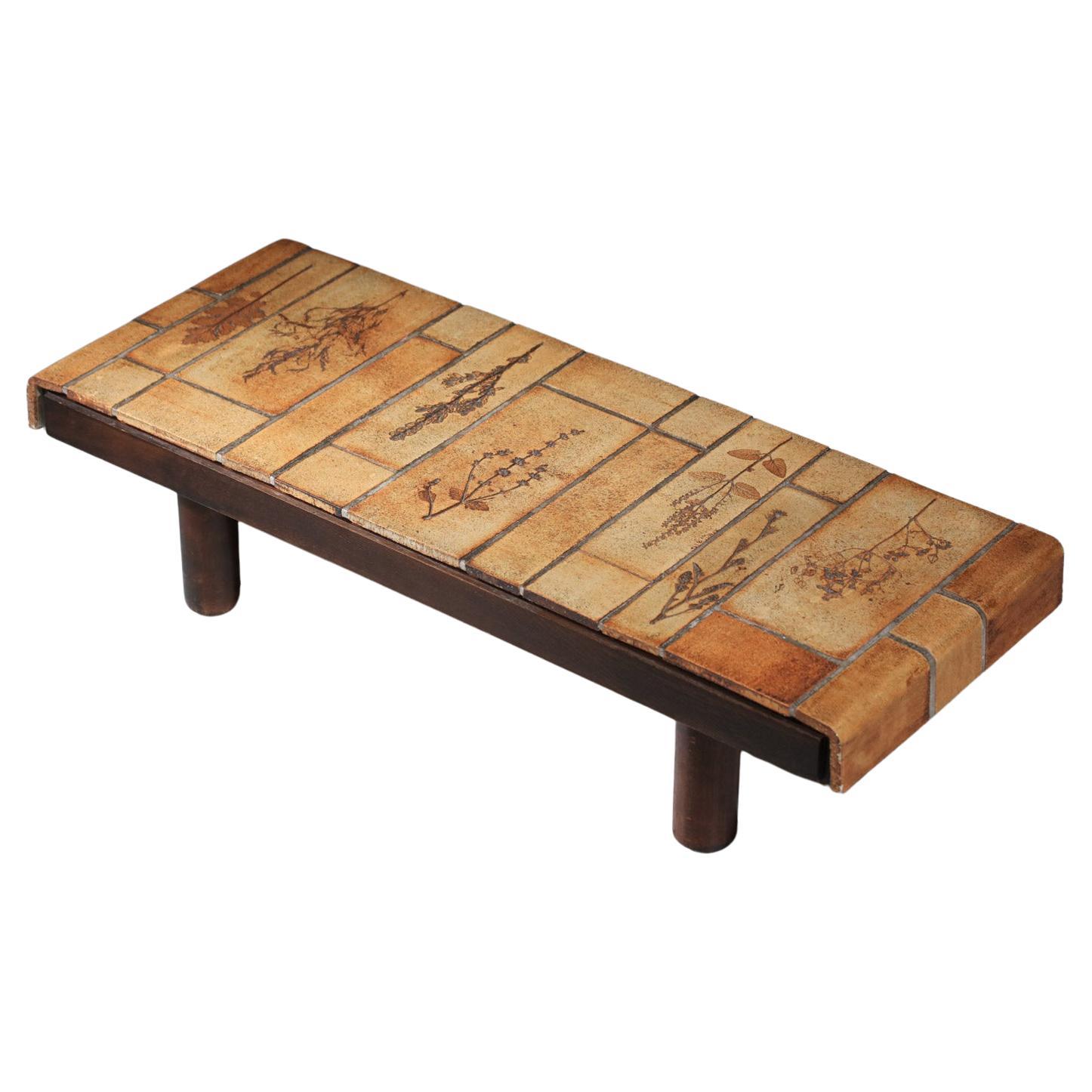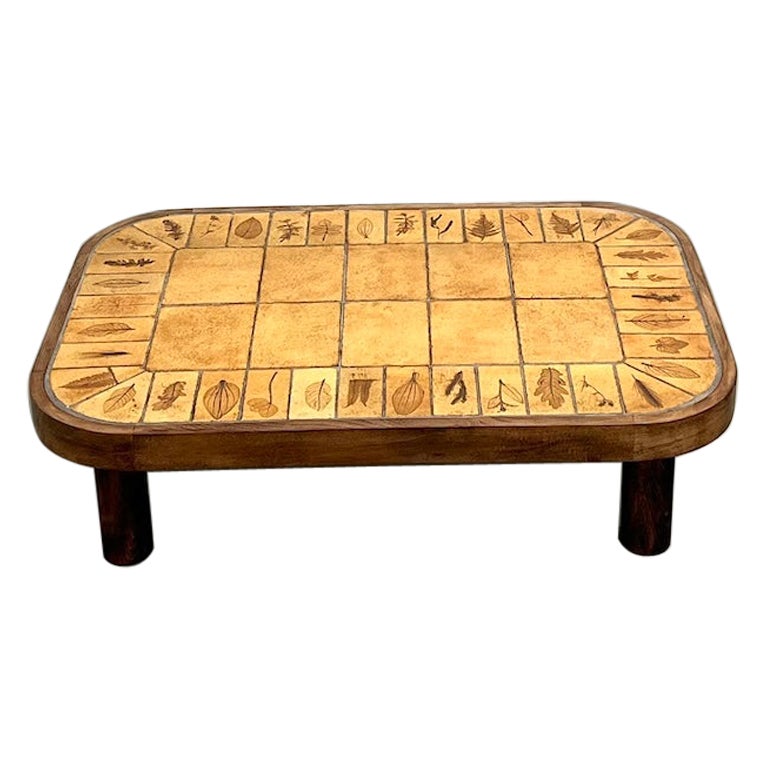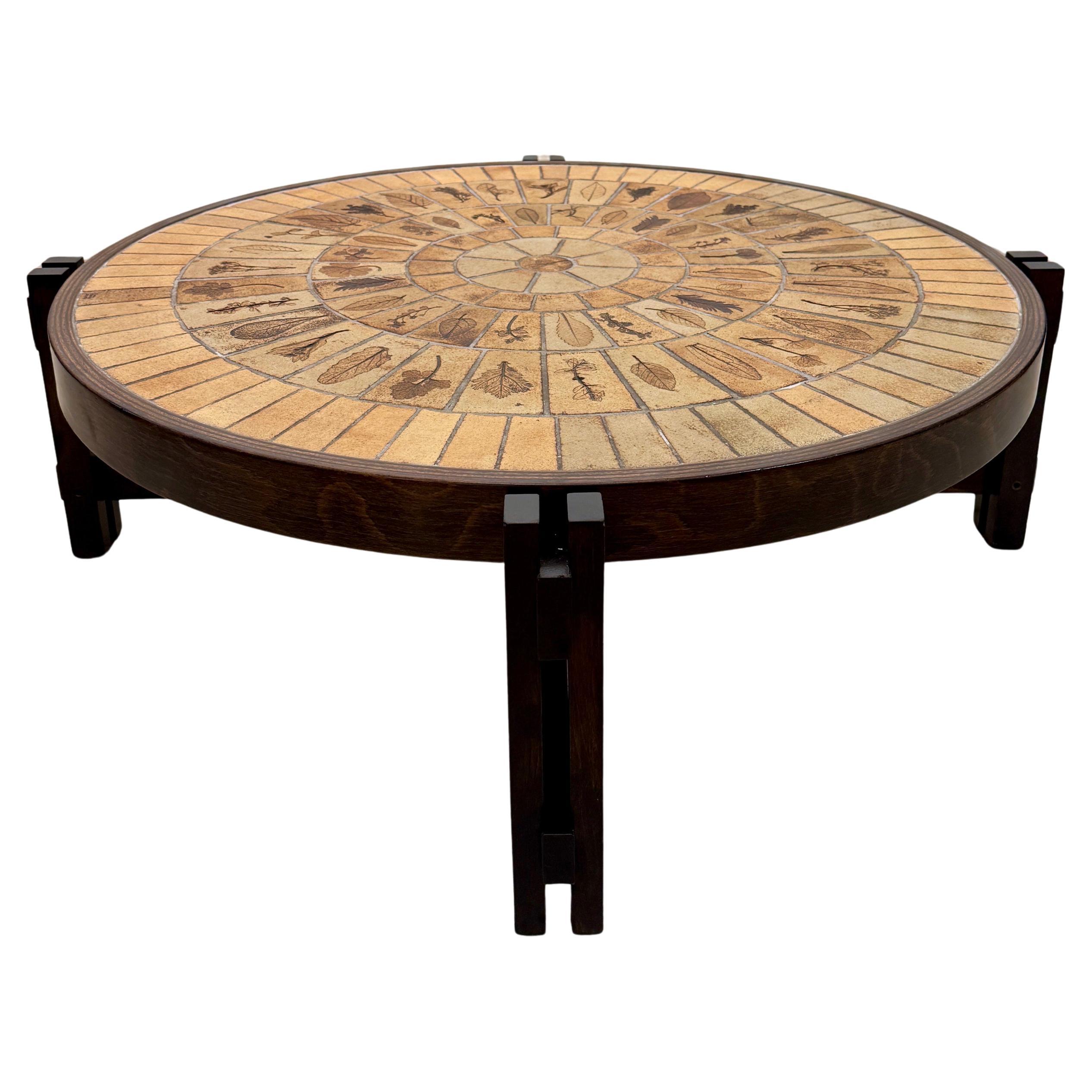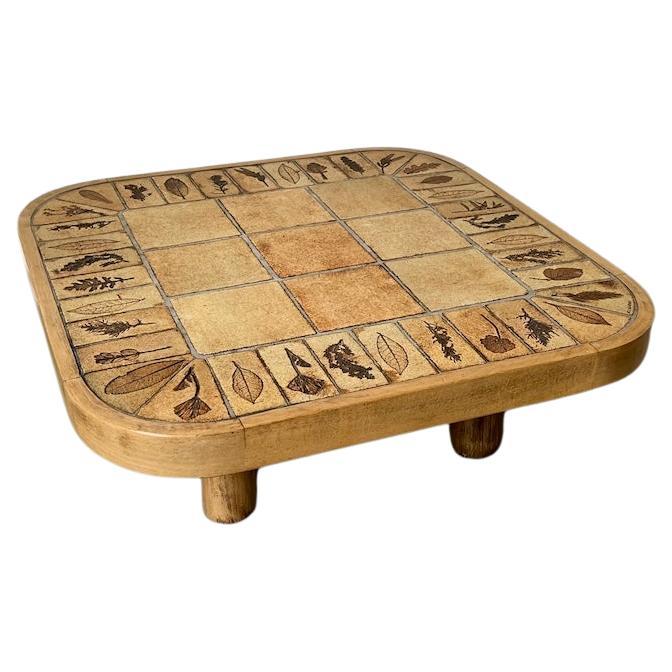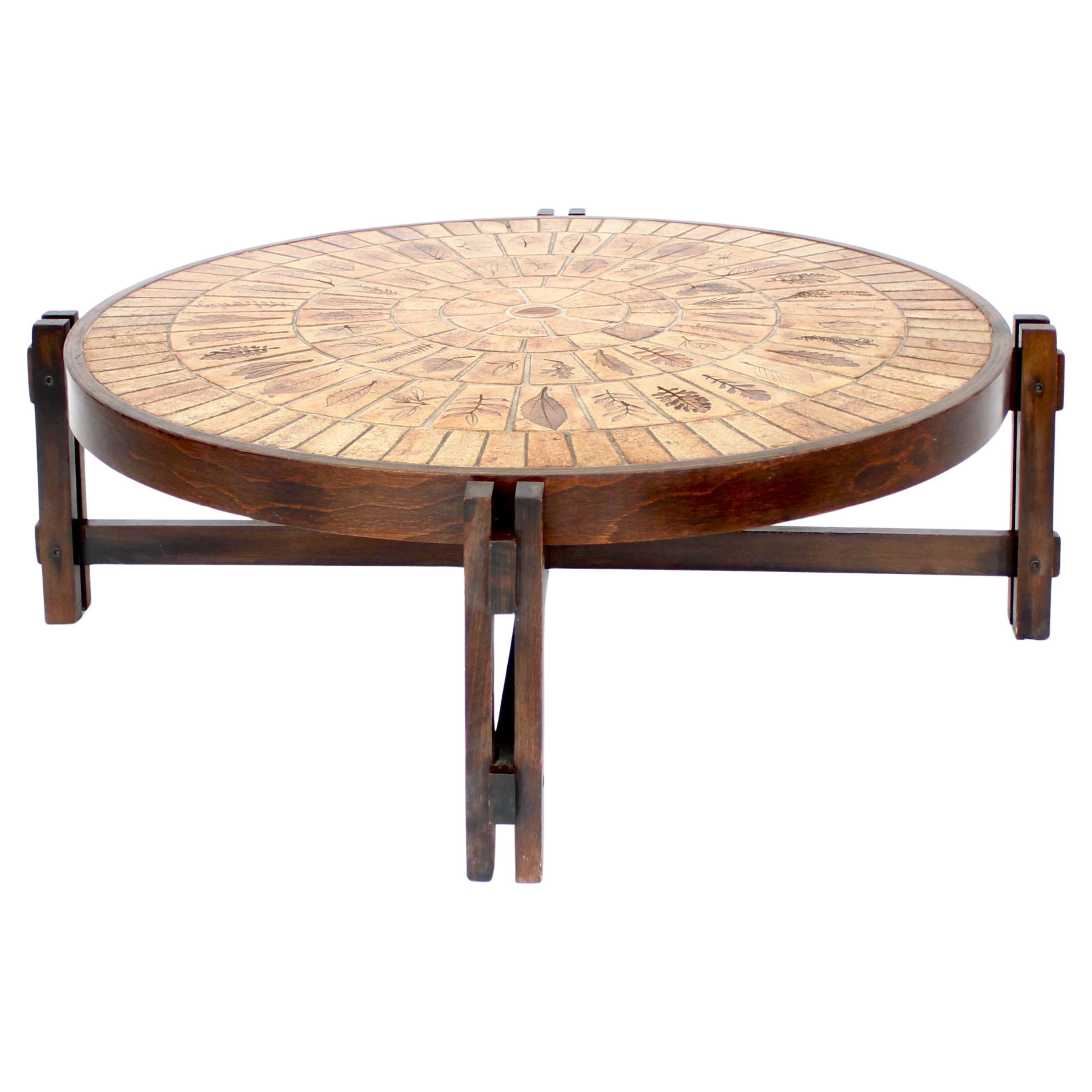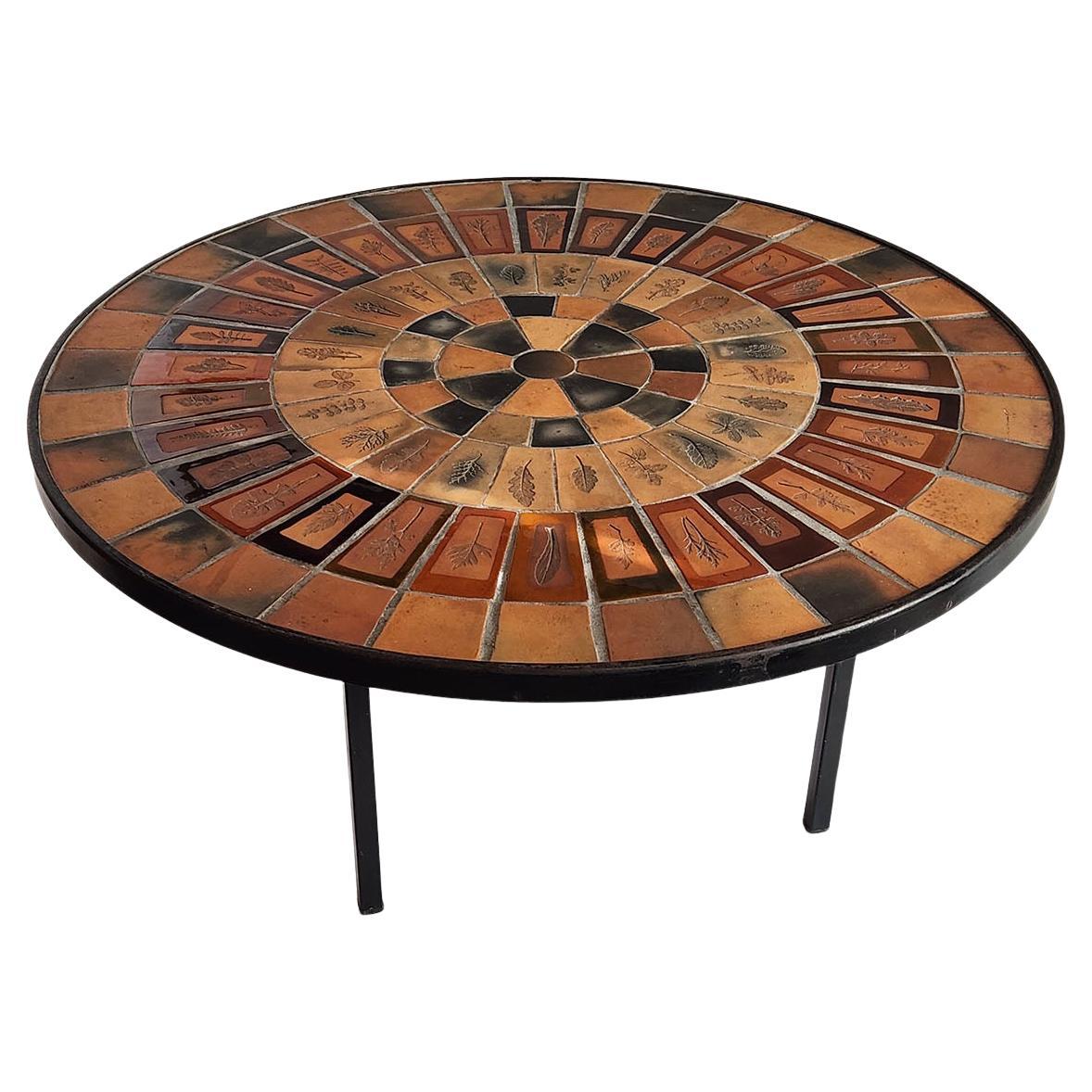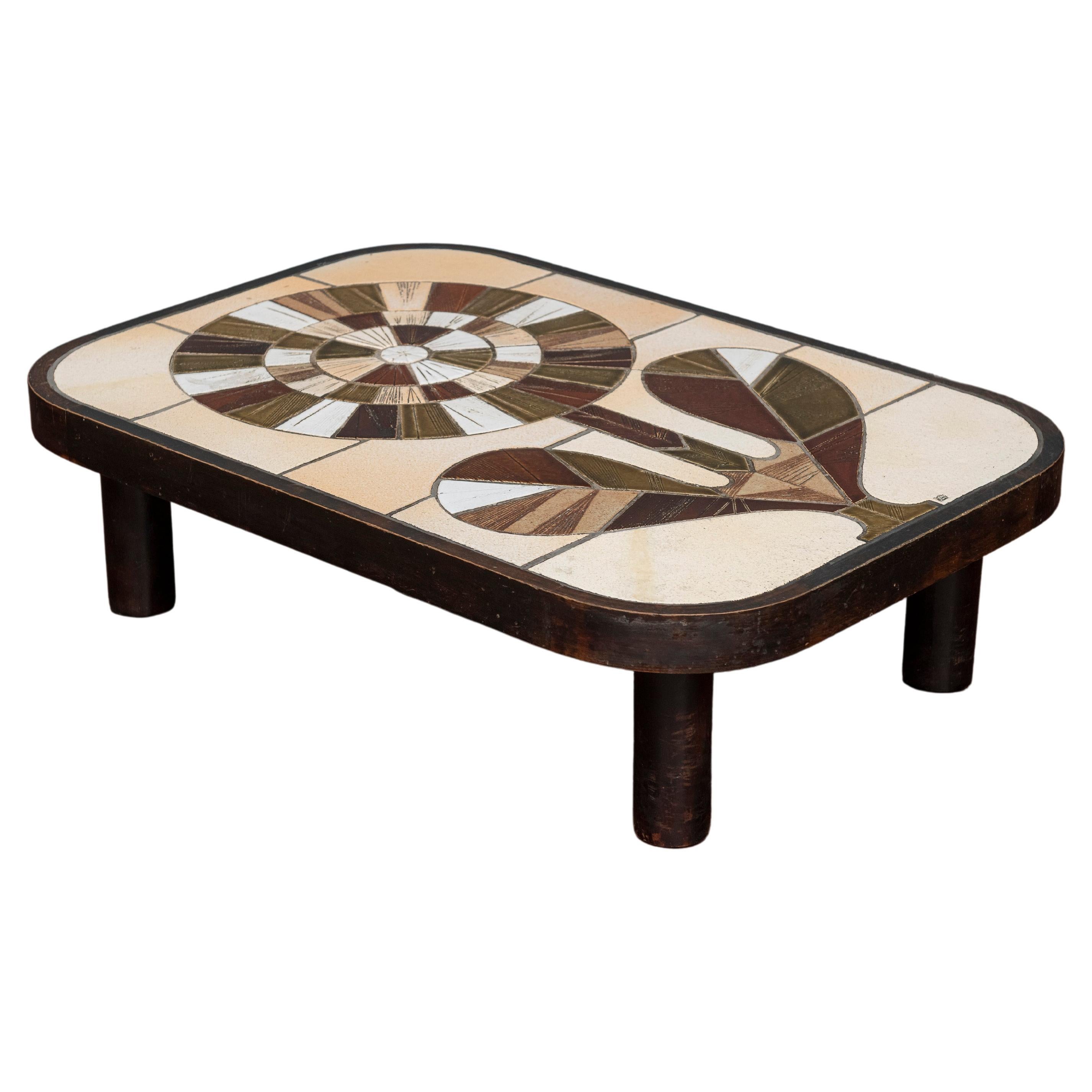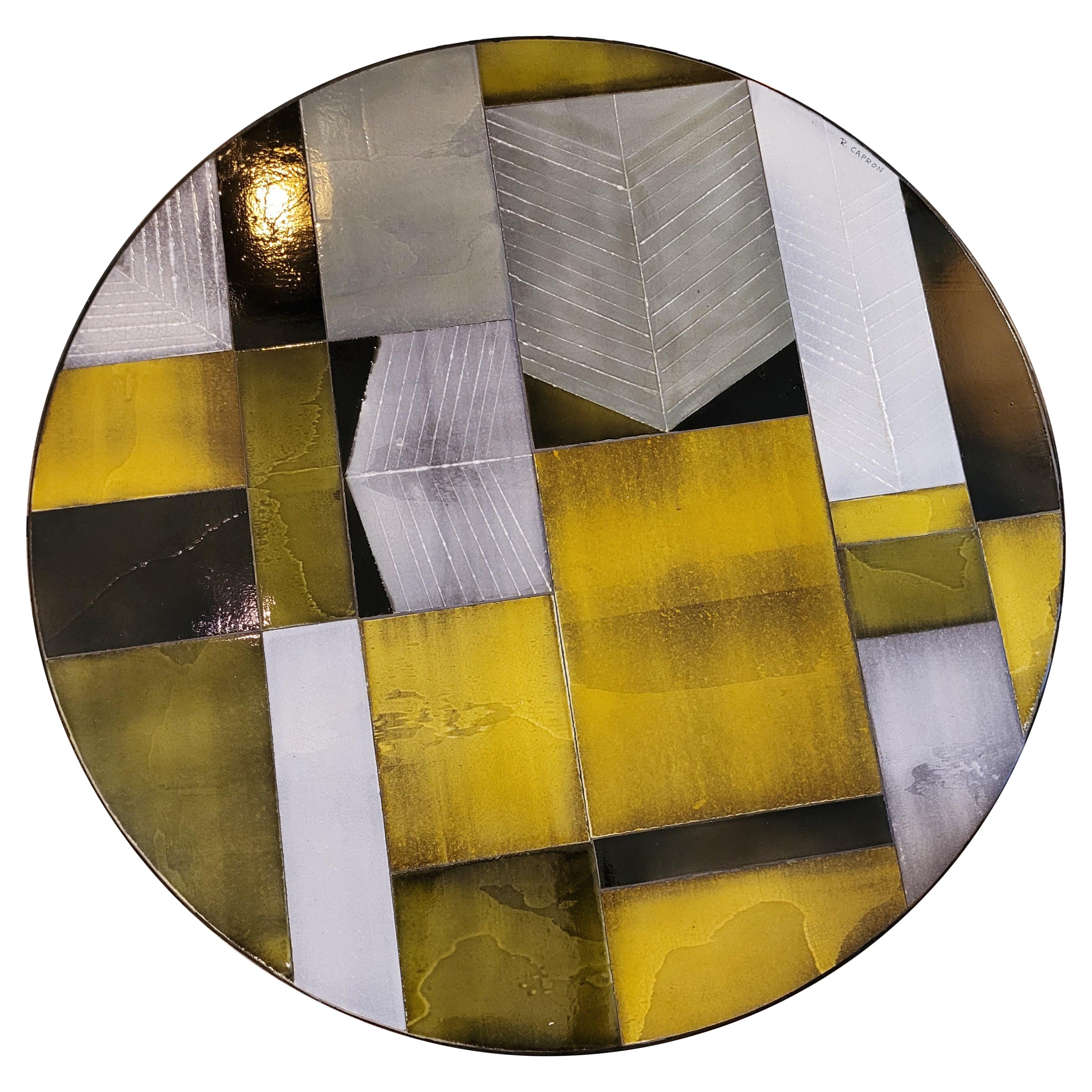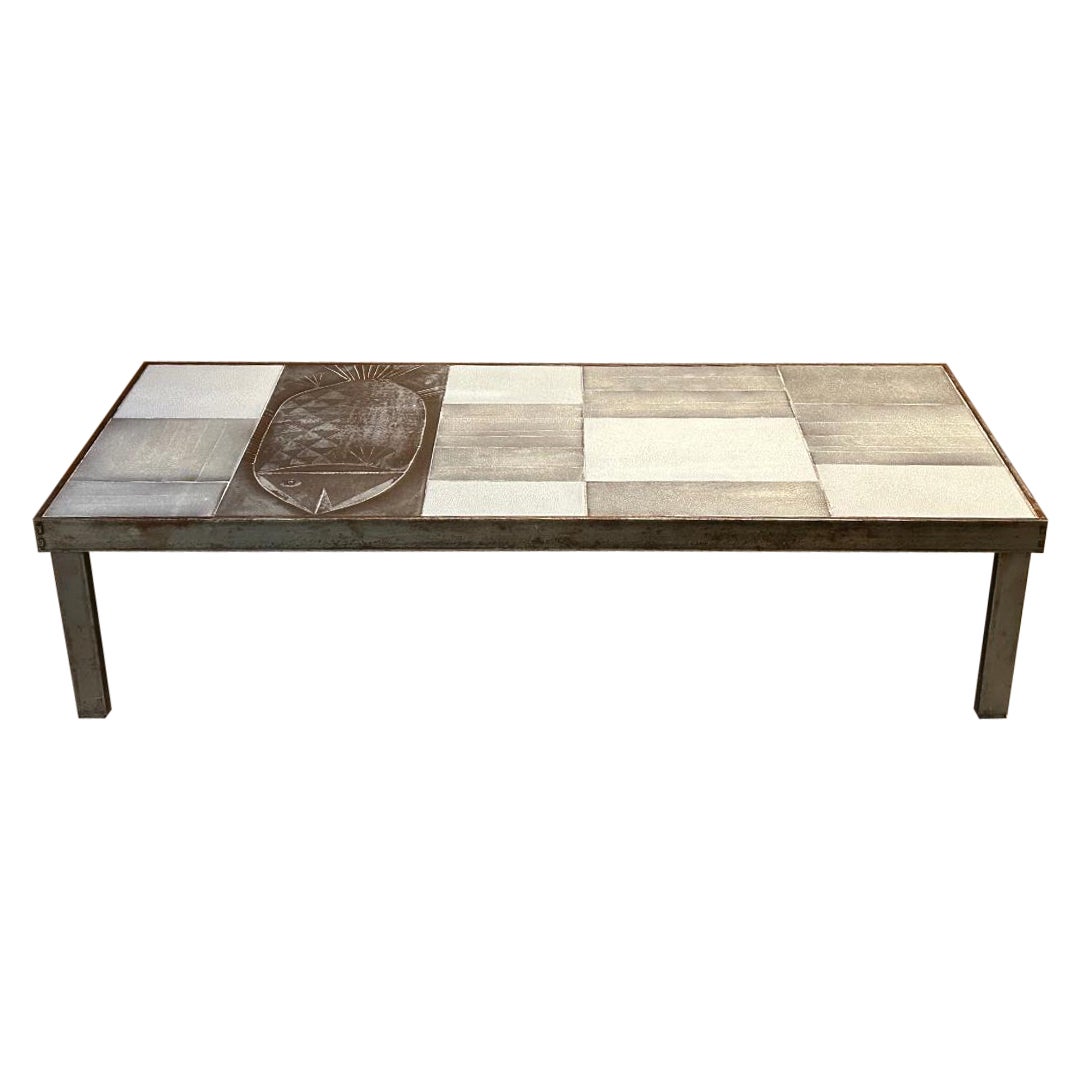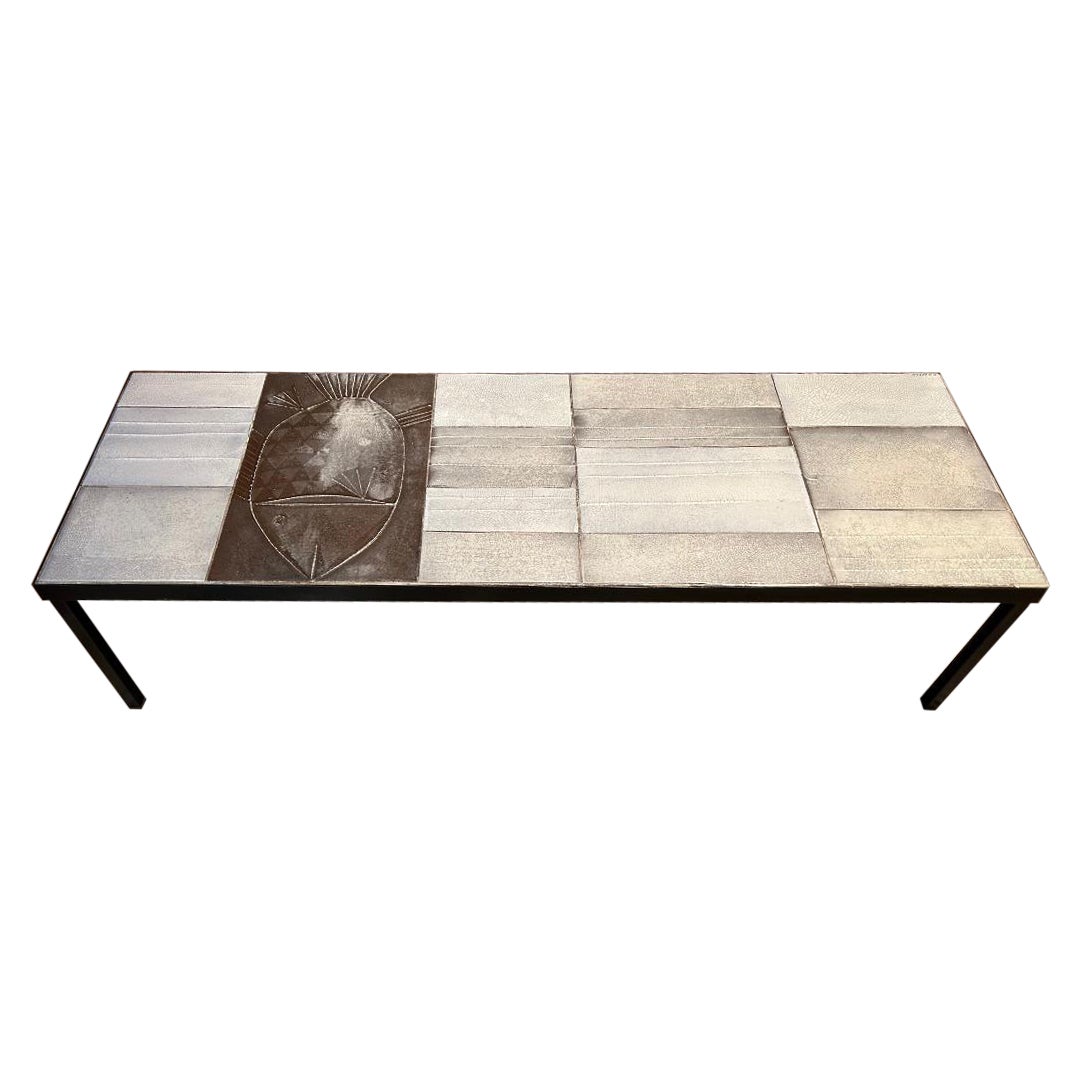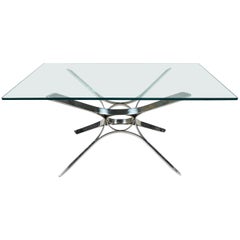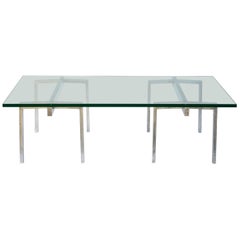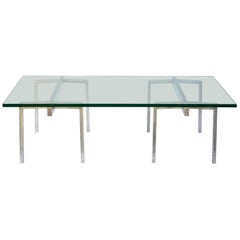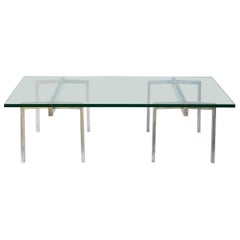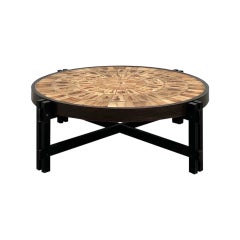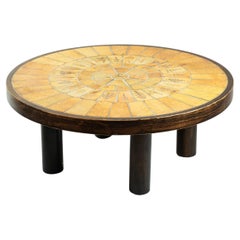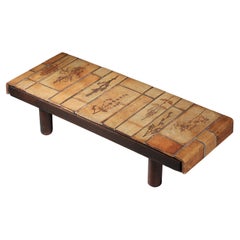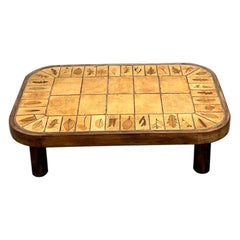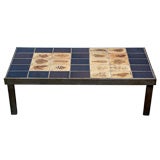
Naturalist "Herbier" ceramic coffee table by Roger Capron
View Similar Items
Want more images or videos?
Request additional images or videos from the seller
1 of 8
Naturalist "Herbier" ceramic coffee table by Roger Capron
About the Item
***
New Vogue for French Free-Form Style
By RICK MARIN
Published: Thursday, May 4, 2000
His brilliantly colored asymmetrical vases, drunken decanters and hand-glazed tile coffee tables have become eminently collectible. Galleries in Europe and New York show his whimsically humanoid sculptures. He receives large-scale public commissions.
But Roger Capron, the 77-year-old French ceramist, would be more impressed with these tributes if he hadn't been through all this before. ''I never turn back on what I have done before,'' Mr. Capron said Tuesday, fresh off a flight from Nice.
Once one of the most prolific and valued artisans of postwar European design, he was, not so long ago, sufficiently unfashionable that a retrospective would have been an unlikely proposition on either side of the Atlantic. But here it is: ''Roger Capron. Art & Design: Postwar to Present,'' opening today and on view through May 31 at Gueridon, a store on Lafayette Street near Bond Street that specializes in midcentury-modern French and Italian decor.
And here was Mr. Capron, with his wife and collaborator, Jacotte, at Gueridon, surrounded by pieces they had not seen in 30 or 40 years. They had come directly from the airport to the store, which was still only half set up for tonight's opening. A compact, vigorous man with wiry gray hair and mustache, he was dressed in his all-denim uniform of jeans, shirt and vest with bright red cravat and bifocals. There was no mistaking his country of origin.
He flipped through the first-ever catalog devoted to his life and work. ''It is like a youthful wind,'' he said in French, as Jean-Philippe Mathieu, one of Gueridon's two owners, translated. ''So many things I had completely forgotten.''
Mrs. Capron's reaction needed no translation: ''C'est formidable!''
In New York, the occasional Capron piece turned up at stores like the rarefied 1950, also on Lafayette Street. But as recently as three years ago, neither Mr. Mathieu nor his partner, Alfonso Munoz, knew anything about this forgotten French master. They belong to a generation born around the time Mr. Capron was at the peak of his renown, the 50's and 60's.
In the well-picked-over period of midcentury modern, he is, Cristina Grajales, the gallery director at 1950, said, ''an unknown hero.''
A little history: Mr. Capron was a charter member of the formes libres (free forms) movement in postwar French pottery centered in Valluris, a working-class town in the hills above Cannes known for its ceramics since Roman times. Mr. Capron came to Valluris from Paris, where he had been an art student, in 1946. Picasso arrived a year later. Both started ateliers. Mr. Capron knew Picasso, not intimately but well enough to refer to him as ''PP'' in his journals and correspondence. PP thought well enough of RP to defend his 1,600-square-foot modernist mural for the Gare Maritime in Cannes, which had been panned when it was finished in 1955. (The building is to be demolished within the year.)
Asked if he was very influenced by Picasso, Mr. Capron exclaimed, ''Oo-la-la! It is impossible not to be influenced by Picasso.''
In 1952, Mr. Capron bought an old cookware factory, and stepped up production while maintaining the handmade process. By the mid-60's, he had abandoned the formes libres style, whose popularity had reached Saks Fifth Avenue and Gimbels. The new phase was devoted to tiles whose ''wildly bright glazes,'' the catalog notes, ''became emblematic of the modern 1960's jet-set lifestyle along the Cote d'Azur.'' But imitation, it seems, is also the sincerest form of pottery. Competition from makers of cheaper, mass-produced tiles shut down the Capron factory. In 1984, he was forced to sell the Atelier Capron name to a rival.
''The black years,'' he recalled.
Mr. Mathieu and Mr. Munoz came across their first Capron piece three years ago -- two pieces of ceramic tile painted with birds -- and made an image of it for a New Year's card. The more they saw of Capron -- who, like Picasso, has gone though enough styles and periods for a dozen artists -- the more intrigued they became. In France, his work was a cliche, thanks to bad imitators. Mr. Munoz said, ''We saw it with fresh eyes.''
Word got back to Mr. Capron that he had fans in New York, and he invited the partners to visit him in Valluris. Mr. Mathieu, who grew up in Nice, did not hesitate. The old master entrusted his young promoters with a cache of his photographs, old catalogs and some rare test tiles.
More than 100 pieces are in the show, not counting the scores of 4-by-4-inch tiles. These multicolored building blocks of much of Mr. Capron's work are being sold off as coasters ($180 for six) or the raw material for customized tables.
In addition, dozens of decorative household objects from the 50's are molded in off-kilter shapes. Essential accessories for what French hipsters might call ''le bachelor pad'' are the bottles marked ''cognac,'' ''vodka'' and ''rhum,'' striped and studded with color in a paraffin technique developed by Picasso. Containers for sugar, rice and tea are adorned with hand-painted bulls. (Prices range from $200 to $2,000.)
Tiled coffee tables ($2,500 to $5,000) were produced from 1958 to 1970. Later, in the late 60's, Mr. Capron started embedding leaves and flowers into clay, then firing it, creating a sort of modern fossil effect in his tiles and tables.
There are a few large, striking wall panels. One is a 5-by-5-foot square of irregularly shaped and angled gold bars ($50,000). Another is a smiling sun ($30,000), one of Mr. Capron's favorite images, from 1971. The sun was a collaboration with another formes libres artist, Jean Derval, but the most visible influence is, again, PP.
''We had a lot of energy then,'' Mr. Capron said. He often worked seven days and nights a week, with no vacation. The hand-painted pieces, of which there are thousands, are all painted by Mr. Capron. That pace has not abated. He is at his studio by 7:30 a.m. and works until 6, six days a week. Sunday he spends making designs for the week to come.
Etienne Sassi, who has know Mr. Capron for 20 years and has sold his work at a gallery in Valluris and the Hammer Galleries in New York, said: ''He is a workaholic. He is always drawing and drawing. I swear, he never stops.''
Absorbed in his current sculptural project, a group of 12-foot-high figures commissioned by Valluris for a new sports complex, Mr. Capron shrugs at the renewed rage for his old stuff. ''I know about it, but I am not interested in it,'' he said. ''The only thing I want to be thinking about is the new sculptures. I never turn back on what I have done before.''
The rest of us will be forgiven for wanting a few coasters.
***
About the Seller
5.0
Platinum Seller
Premium sellers with a 4.7+ rating and 24-hour response times
Established in 2005
1stDibs seller since 2006
884 sales on 1stDibs
Authenticity Guarantee
In the unlikely event there’s an issue with an item’s authenticity, contact us within 1 year for a full refund. DetailsMoney-Back Guarantee
If your item is not as described, is damaged in transit, or does not arrive, contact us within 7 days for a full refund. Details24-Hour Cancellation
You have a 24-hour grace period in which to reconsider your purchase, with no questions asked.Vetted Professional Sellers
Our world-class sellers must adhere to strict standards for service and quality, maintaining the integrity of our listings.Price-Match Guarantee
If you find that a seller listed the same item for a lower price elsewhere, we’ll match it.Trusted Global Delivery
Our best-in-class carrier network provides specialized shipping options worldwide, including custom delivery.More From This Seller
View AllSculptural Chrome and Glass Coffee Table by Roger Sprunger for Dunbar
By Dunbar Furniture, Roger Sprunger
Located in Los Angeles, CA
Sculptural chrome and glass coffee table designed by Roger Sprunger for Dunbar Furniture.
Category
Vintage 1970s American Modern Coffee and Cocktail Tables
Materials
Steel, Chrome
'Treteaux' Coffee Table by Design Frères
By Jacques Quinet
Located in Los Angeles, CA
3/4 in. thick tempered glass top over polished stainless steel bases. The glass top can be ordered in a larger size (longer than 51 in. and wider than 31.5 in.).
Category
21st Century and Contemporary French Modern Coffee and Cocktail Tables
Materials
Stainless Steel
The 'Treteaux' Coffee Table by Design Frères
By Jacques Quinet
Located in Los Angeles, CA
3/4 in. thick tempered glass top over polished stainless steel bases. The glass top can be ordered in a larger size (longer than 51 in. and wider than 31.5 in.).
Category
21st Century and Contemporary French Modern Coffee and Cocktail Tables
Materials
Stainless Steel
The 'Treteaux' Coffee Table by Design Frères
By Jacques Quinet
Located in Los Angeles, CA
3/4 in. thick tempered glass top over polished stainless steel bases. The glass top can be ordered in a larger size (longer than 51 in. and wider than 31.5 in.).
Category
21st Century and Contemporary French Modern Coffee and Cocktail Tables
Materials
Stainless Steel
Round 'Upsilon' Coffee Table by Design Frères
By Design Frères
Located in Los Angeles, CA
Round 'Upsilon' marble and blackened steel coffee table by Design Frères.
Polished round rain forest green veined marble over a heavy m...
Category
21st Century and Contemporary Post-Modern Coffee and Cocktail Tables
Materials
Marble, Steel
Round 'Upsilon' Coffee Table by Design Frères
By Design Frères
Located in Los Angeles, CA
Round 'Upsilon' marble and blackened steel coffee table by Design Frères.
Polished round rain forest green veined marble over a heavy m...
Category
21st Century and Contemporary Post-Modern Coffee and Cocktail Tables
Materials
Marble, Steel
$5,500 / item
You May Also Like
"Les Herbiers" coffee table by Roger Capron
By Roger Capron
Located in LYON, FR
This iconic coffee table was created by French ceramicist Roger Capron in the 1960s. It features a solid wood and plywood frame and a top made of ceramic tiles with a herbarium motif...
Category
Vintage 1960s French Mid-Century Modern Coffee and Cocktail Tables
Materials
Ceramic
Charming Herbier Coffee Table by Roger Capron
By Roger Capron
Located in NICE, FR
Roger Capron's (1922-2006) herbarium coffee table is a mid-20th-century design piece, characterized by a ceramic tile top adorned with plant-inspired or abstract motifs. Hand made in...
Category
Vintage 1970s French Mid-Century Modern Coffee and Cocktail Tables
Materials
Ceramic, Wood
Ceramic coffee table Roger Capron herbier rectangular vallauris French
By Roger Capron
Located in Ternay, Auvergne-Rhône-Alpes
French coffee table from the 50's by artist Roger Capron. Solid wood base and top composed of ceramic tiles of various sizes glazed in beige and brown hues. The table features the ar...
Category
Vintage 1950s French Mid-Century Modern Coffee and Cocktail Tables
Materials
Ceramic, Wood
Roger Capron rectangular coffee table, "Herbiers" model
By Roger Capron
Located in LYON, FR
This Roger Capron coffee table, "Herbiers" model, circa 1965, is rectangular in shape and features four cylindrical legs. It is a combination of a beech wood frame and a top decorate...
Category
Vintage 1960s French Mid-Century Modern Coffee and Cocktail Tables
Materials
Ceramic
Roger Capron Vintage Round Ceramic Tile "Les Herbiers" Coffee Table
By Roger Capron
Located in North Miami, FL
This “Garrigue” model round shape coffee table features ceramic tiles decorated with leaves, with a constructivist base in oak. The base is separate from the round top which sits ne...
Category
Mid-20th Century French Mid-Century Modern Coffee and Cocktail Tables
Materials
Ceramic, Wood
Roger Capron coffee table, Herbiers model in beech
By Roger Capron
Located in LYON, FR
Rare coffee table by Roger Capron, square shape, light stain in solid beech.
Ceramic coffee table and solid beech base from the 70s. This square model with the "herbarium" pattern i...
Category
Vintage 1970s French Mid-Century Modern Coffee and Cocktail Tables
Materials
Ceramic, Beech
